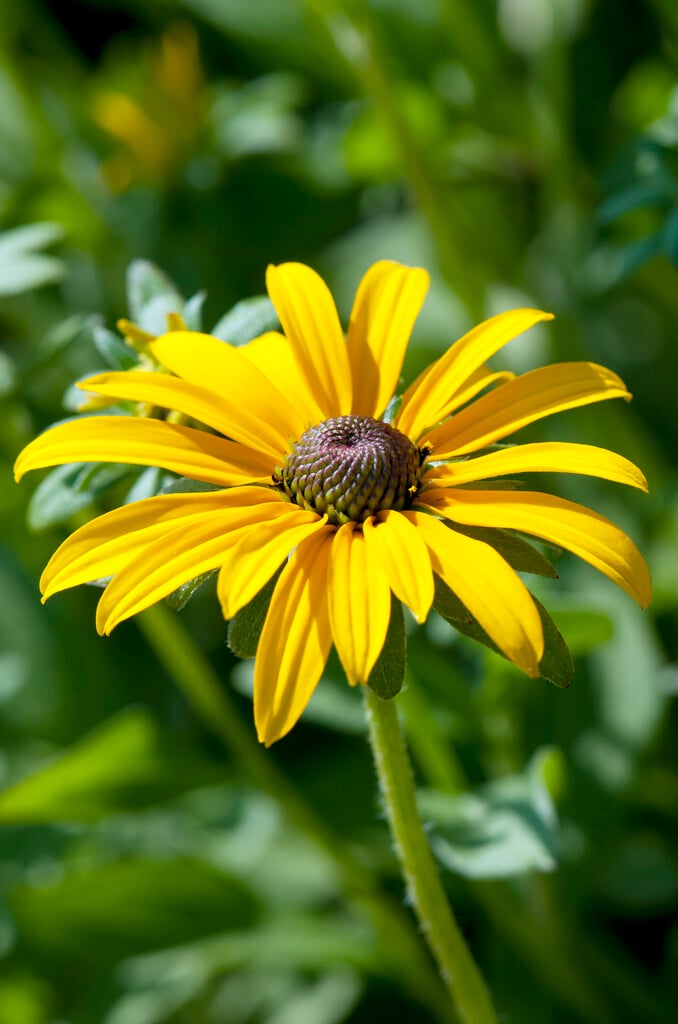Rudbeckia missouriensis
Missouri coneflower
A vigorous, hairy, upright herbaceous perennial to 90cm tall, with wiry stems and narrow leaves. From late summer until autumn it produces daisy-like flowerheads composed of bright yellow ray florets around a central, black cone. The pollinator-friendly flowers are good for cutting

Buy this plant
Size
Ultimate height
0.5–1 metresTime to ultimate height
2–5 yearsUltimate spread
0.5–1 metresGrowing conditions
Moisture
Moist but well–drained, Well–drainedpH
Alkaline, NeutralColour & scent
| Stem | Flower | Foliage | Fruit | |
| Spring | Green | |||
|---|---|---|---|---|
| Summer | Yellow | Green | ||
| Autumn | Yellow | Green | ||
| Winter |
Position
- Full sun
Aspect
South–facing or West–facing
Exposure
ShelteredDrought resistance
Yes Hardiness
H5Botanical details
- Family
- Asteraceae
- Native to GB / Ireland
- No
- Foliage
- Deciduous
- Habit
- Clump forming
- Genus
Rudbeckia may be annuals, biennials or rhizomatous herbaceous perennials, with simple or pinnately divided leaves and large daisy-like flower-heads with yellow or orange rays surrounding a prominent conical disk
- Name status
Correct
- Plant range
- C & SC USA
How to grow
Cultivation
Grow in moderately fertile, neutral to alkaline soil in full sun. Drought tolerant once established. See rudbeckia cultivation
Propagation
Propagate by seed or division
Suggested planting locations and garden types
- Cottage and informal garden
- Prairie planting
- Wildlife gardens
- Low Maintenance
- Cut flowers
- Flower borders and beds
Pruning
Cut old stems back to ground level in early spring
Pests
May be susceptible to aphids
Diseases
May be susceptible to powdery mildews
Get involved
The Royal Horticultural Society is the UK’s leading gardening charity. We aim to enrich everyone’s life through plants, and make the UK a greener and more beautiful place.